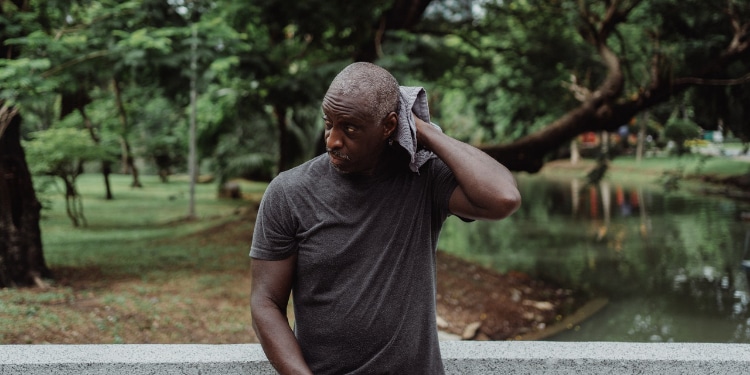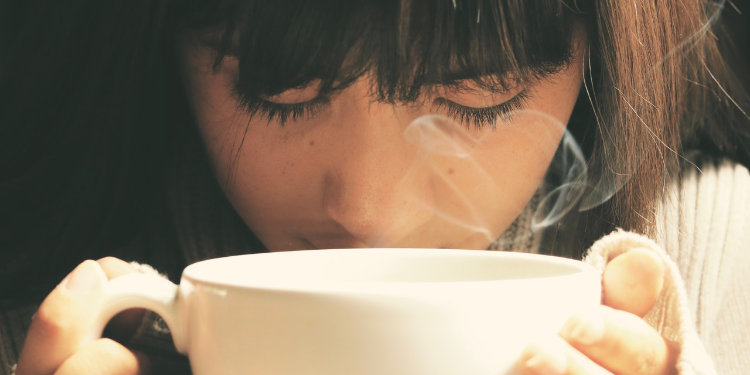










If you are having a difficult time managing the symptoms of your anxiety, you are not alone. Anxiety is one of the most common mental health problems today. People experience various types of anxiety ranging from mild to severely debilitating.

Anxiety is associated with many different intense emotional states. It can be difficult to focus or feel in control when you experience waves of panic or overwhelming anxious feelings. Oftentimes, everything feels like a blur.
The good news though is that there are numerous effective ways to reduce symptoms of anxiety. One extremely effective technique that you can implement anytime, anywhere, is grounding, which uses simple practices to activate your senses in a way that helps combat symptoms of anxiety.
Some better-known grounding techniques include deep breathing and journaling, but there are numerous other, lesser-known approaches to grounding. You can try out these hidden gems and see if they work for you. Whether you are ruminating, feeling powerless, or on the verge of a full-blown panic attack, incorporating grounding techniques can help shift your focus away from the source of whatever is causing you to feel anxious.
Grounding techniques draw your mind and body back to the present moment. This seemingly small action helps break unhelpful thought patterns and refocuses your senses, taking you outside of that anxious state. Grounding techniques can be especially helpful for symptoms like disconnectedness, restlessness, and looping thoughts.
There are numerous types of grounding techniques that you can learn. You can even invent your own! These techniques generally fall into categories based on their main function. Categories of grounding include using the five senses, physical activity, observation, self-soothing, distraction, and breathing.
Activating your sense of touch, smell, sight, sound, or taste can have profound effects on your state of well-being. Grounding techniques that use the five senses can immediately shift your focus, interrupting any unhealthy thought patterns.
Utilize your sense of touch by paying attention to the way things feel on your skin. You can consciously draw attention to sensations like how your shoes feel on your feet, the wallet in your pocket, or how your hair sits on your head.
Many people find it helpful to activate touch through physically touching objects. Try holding ice, running your fingers across a textured surface, or carrying an object in your pocket like a coin or marble. Whatever method you use, be sure to focus on how the object feels against your skin and its weight, and describe these sensations in your head.
Activating your sense of smell can be a very powerful way to reach a state of calm when you are anxious. Whether it’s coffee or fresh laundry, you are probably already aware of some smells that give you a sense of calmness and warmth. Whenever possible, make such fragrances accessible for use any time you feel stressed or overwhelmed.
Try carrying around a small spray bottle to use any time you feel like it. You may prefer to use scents you already enjoy, especially if they are associated with positive feelings. Otherwise, try smelling lavender, which can induce feelings of calmness. When using the sense of smell as a grounding technique, try inhaling slowly and deeply. Make mental notes of the qualities of the scent and savor the way it makes you feel
Using sight is one of the most convenient grounding techniques because there is always something to look at. Start by choosing something in your surroundings to observe. Then, in your head, describe the item in detail, as if you were describing it to someone who can’t see it.
Think about the texture, shape, color, and other features as you are examining the object. Once you have finished describing one object, move on to another. As your mind fixates on these different objects, you’ll find that using sight is an effective distraction from anxious thoughts and feelings.
Sound is another convenient technique as there are always sounds. Tune into whatever sound is around you and truly focus on what you are hearing. Whether it’s birds chirping, children playing, wind blowing, or your own breath, listen closely and attentively.
Some people may also find it helpful to put on a soundtrack or a particular song. If using a particular song, try focusing on all of the instruments you hear, how the singer’s voice sounds, the fluctuation in pitch, and how it all sounds together.
You may already carry gum or candy with you most of the time, which can make this technique pretty quick and easy. When using taste as a grounding technique, the point is to truly experience the flavor of the food or gum that is in your mouth.
Whatever you decide to put in your mouth, let it rest there, move it around, and truly focus on what it tastes like. Think about the consistency and how the flavor changes as you chew it or move it around inside your mouth. Try describing the experience in detail to yourself. Make sure to use just one flavor at a time.
Using your body can be an excellent way to mindfully reconnect when you are feeling overwhelmed. You can quite literally do any physical activity. The key is to focus on all of the physical sensations you are experiencing while doing it.
Here are some grounding techniques using physical activity that you can implement into your own routine to reduce anxiety:
When it comes to getting grounded, there’s nothing quite like getting on the ground. Try lying down, flat on your back, and doing a quick body scan. Notice how each of your body parts rests on the floor. Take note of how the surface feels against your skin.
Try walking mindfully as an easy and effective grounding technique. As you take each step, notice the sensation of the ground beneath your feet. Pay attention to how your foot lands as you propel yourself forward and feel the way your arms swing at your sides.
Try building yourself a short stretching routine as a means of grounding when you are feeling anxious. As you stretch, pay close attention to how your muscles feel, notice any tightness in your body, and spend time stretching it out. Breathe into your stretches as you do them and feel how your body begins to relax.
Rather than rushing through chores or putting them off, try doing them mindfully as a way to reduce anxiety. Doing things like folding laundry or weeding can be calming when you do them attentively. Focus on the way your body feels as you go through the motions and all the other physical sensations that come with the activity.
Observation is an excellent technique that uses your environment as a source of grounding. Depending on where you are, you can use observation in several different ways.
Try counting something in your immediate environment. For instance, if you are in a public area with people passing by, you could count every person with blue pants. If you are near trees, try counting the tree branches or colored leaves.
If you want to get especially lost in observation, try observing and re-creating. You can use a pen, pencil, or even modeling clay to try and draw or mold whatever you see. If drawing isn’t your thing, you can write out what you see instead.
Self-soothing is a grounding technique that adds an element of distraction and comfort to help combat symptoms of anxiety. You can use one of the suggestions below or implement your own self-soothing activity.
Slather on your favorite moisturizer to a body part of your choice. Notice the way it feels as you slowly begin to work it into your skin.
Take a warm bubble bath or steamy shower to ground yourself. Be mindful of the way the water rushes against your skin and pay attention to the warmth, the sounds, and how your body feels. Use calming scents like lavender or mint to better help ease your anxiety.
You may be someone who responds well to carrying an object around for self-soothing. This could be a bracelet, handkerchief, or small figurine. Choose something that conjures positive memories or feelings along with it. When you feel stressed, hold the object in your hand, and examine its texture, weight, and feel.
Sometimes the quickest way to reduce the intense emotions that accompany anxiety is through straightforward, unadulterated distraction. Rather than tuning out on your phone or in front of your television, try implementing distraction techniques that stimulate your senses and force you to focus on a certain activity.
Sometimes it helps to choose a challenging activity that uses up a lot of your brain’s resources. Try one of the techniques below or come up with your own.
Start at 100 and count backward by 7s until you get to 0. This will feel pretty consuming and help your mind focus on the task at hand. You can also count up by 7s or use any other interval.
Pick a category (e.g., cities) and go through the alphabet, trying to name something in that category for each letter. You can also try picking a more specific category (e.g., animals with tails) and simply list all of the animals with tails you can think of.
Think of a song you know most of the lyrics to and try saying them in your head without singing the accompanying tune.
Grab your journal and write something in detail. You can document a recent adventure or pretend you are writing out instructions for an alien on simple daily tasks like “how to pour water.”
Taking a deep breath is one of the most commonly suggested activities to help ease anxiety since it helps activate the parasympathetic nervous system which has a calming effect. You can also try the following forms of breathing exercises as grounding techniques for anxiety reduction.
Place one hand on your stomach and the other on your chest. Try to keep your chest still while slowly breathing through your nose and into your belly. Watch as the hand on your belly begins to rise and fall as if it were resting on a balloon, inflating and deflating.
Breathe in slowly through your nose while counting to four. Then, hold your breath for seven seconds. Next, breathe out slowly through your mouth while counting to eight. Repeat as many times as feels comfortable. You can also adjust the numbers to your liking.
Close your eyes and breathe in slowly through your nose. As you exhale, keep your mouth closed and hum like a bee. Continue exhaling until you feel empty of breath and repeat the process. For added sensation, you can plug your ears with your fingers as you complete the technique.
Grounding can be an excellent tool to keep in your toolbox to help you cope with the difficult emotions and sensations that accompany anxiety. You can easily implement these techniques any time of day and create new ones that work for you. The key is to use them in a way that forces you to reconnect with your mind and body in the present moment.
Grounding techniques can be used in combination with any other form of anxiety reduction. If you find that your anxiety is currently causing significant problems in your life and feels beyond your control, consider engaging in therapy for your anxiety.
Sources